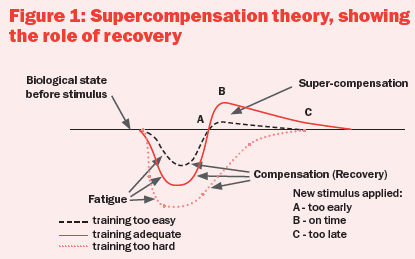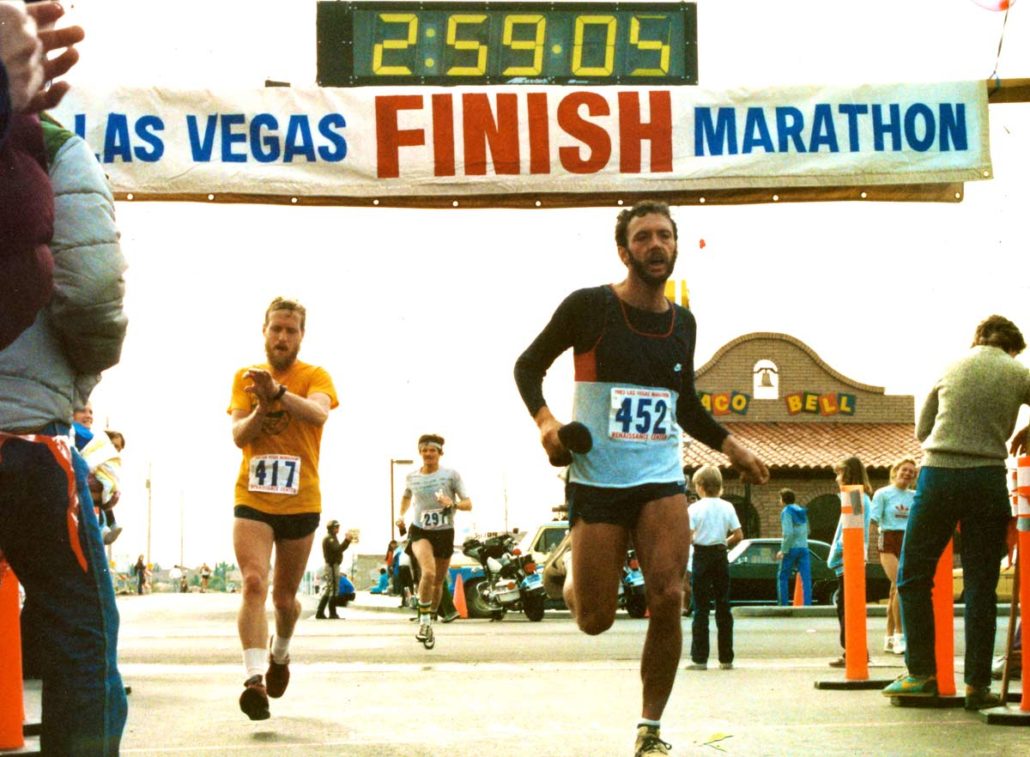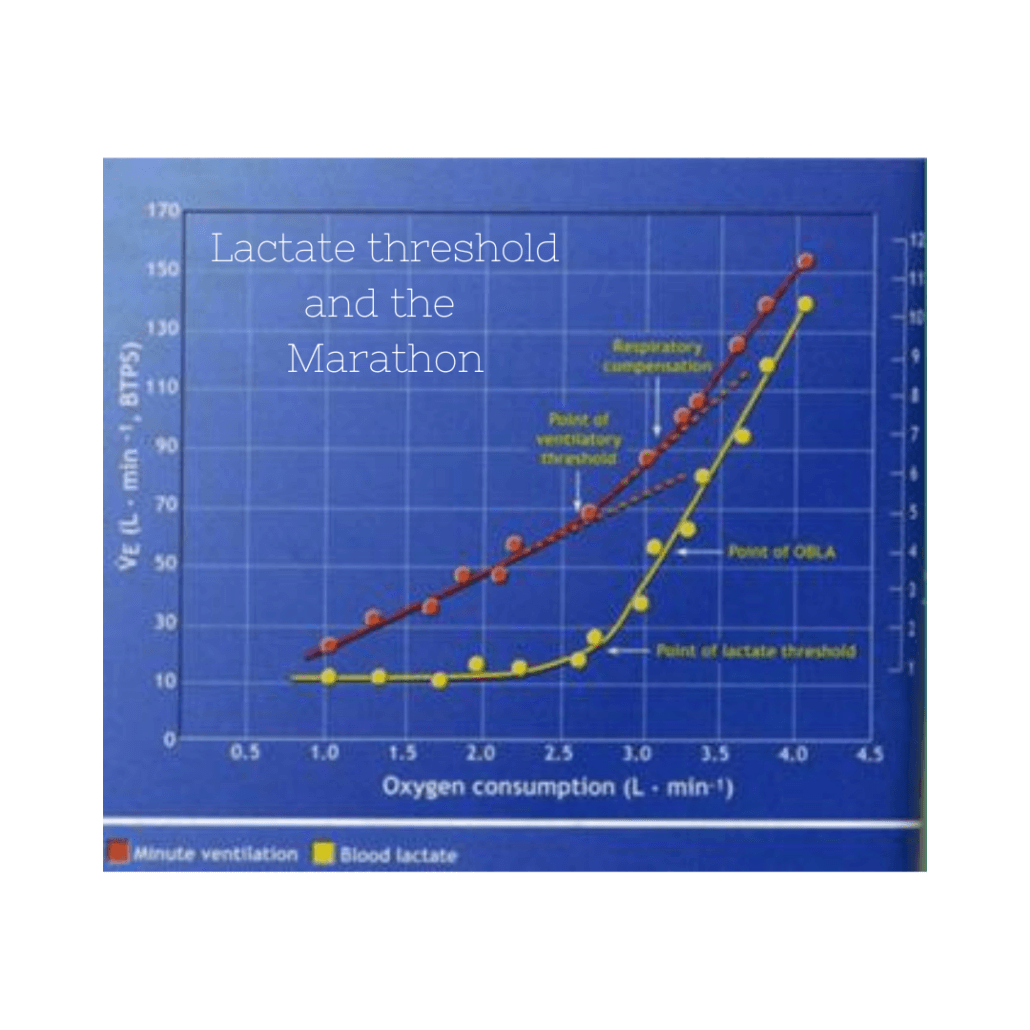Stress / Recovery Principles

One of the questions I get a lot is in regards to spacing out SOS days and when to do so. Many times it’s because they are a masters runner and they just don’t recover as fast as they used to. Is that necessarily true, though? I myself catching myself claiming so, but it might be in my head. I mean, let’s face it, we simply are way busier than we were in our 20’s. However, this article from Alex Hutchinson provides some interesting insight. The truth is, it’s rarely a simple answer. As Alex talks about, it’s just harder as we age. Physiologically, there may not be any statistical significance in differences, but the reality of things can be quite different- finding time to train, a lack of sleep due to family or work, and just more responsibility in general.
A topic like this with can have a lot of tentacles to it. For instance, I wrote THIS blog post in 2016 that started the conversation, but left a lot of questions. So today, let’s pick it up again and continue. I think the best place to start is with the very basics of training methodology. That means that we have to understand some basic ideas and philosophies.
Stress/Recovery Principle

There are lots of ways to describe the Stress/Recovery principle of training. You may have heard it referred to as the Supercompensation Principle and runners will describe it as the Hard/Easy Principle. Regardless of the title, the premise is the same. Your body likes to be in balance (homeostasis), and when you exercise above what you are used to doing, you break that balance. So, when we exercise at a harder intensity (or longer duration, or combination), it causes the body to be fatigued. The body is really good at adapting to a stressful situation, so it will begin to adapt and prepare itself for the next time it is exposed to that stress. In other words, it supercompensates to the work that it was exposed to. Now, if we recover from that work, we are becoming faster. If we never allow for recovery to hard work, or expose the body to hard work before it is ready, then we don’t see these adaptations and make it really hard for our bodies to adapt. In most cases, we are sick, injured, or burned out in several weeks.
So, in short, for all the hard work you do, you have to recover a certain amount.
This idea can be sound for the 1-2 days right after a workout to the full year of training for different races. We’ll get into that later. For now, hard work has to be followed by recovery of some form and duration.
To close out this discussion of the principle, look at the figure above. While doing hard workouts too close to each other exposes the body to the stress too often, the opposite can be just as bad. If we only do a workout every 4-5 days, then we don’t expose the body to the stress often enough. This will mean long training segments to make marginal gains in fitness. It’s a delicate balance and means that you (and your coach), should learn over time what that balance looks like for you.
So what we just discussed was the most basic of situations. The question becomes how does that look over weeks or months? Luckily, the model can really show us how a week and even a while training cycle may look, depending on how you approach it. Below is great representation the 5 most common scenarios of how a runners training typically goes. This can represent a week or two, all the way up to an entire training segment.
Factors
Tradition says that a single bout of hard work take anywhere from 24 to 72 hours to recover from. Now, that’s a big range- from 1 to 3 days! Of course there’s a number of variables that affect that number. Most of these factors are within your control, while others are not.
Knowing yourself:
By this I am referring to knowing what take a long time to recover from and what you can recover from quickly. Some of you recover really quickly from speed, while others seem to be pretty beat up for a few days after. The same people who bounce back quickly from speed work, loathe the long runs because it takes so much out of them. Meanwhile, the same people who struggled through speed work, may do a long run and ask for a workout the next day. In short: Some workouts you may need only 1-2 days to bounce back from, where others may require 2-3 days.
Related: Self Assessments 1
Where you are at in a schedule:
If you are early in a schedule and fitness is not there, then a workout may take more out of you than it would if it were four weeks later. On the other hand, if you are on the verge of being overcooked or entering the taper, then taking an extra day might be just enough to make you more fresh. However, in the heart of the training schedules, say 2-8 weeks out, you aren’t expected to be fresh. That’s where the cumulative fatigue kicks in.
Related: 5 Early Pitfalls
Weather/acclimation
The time of year you are training in can make a big difference, too. This is especially true if you are in a place where you go from one extreme to another. A prime example of this is when a person training for Boston in the Midwest. The person is starting their training in the beginning of winter, then is in the hardest part of their training during the coldest part of winter. If that’s not tough enough, it could be 75 degrees, plus on race day! Now, the same could be said for a person in the south where they are training all summer through the heat and humidity. It can be tough to gauge effort during these days and pace can sometimes be thrown out the window. If we try to force the issue or just have a tough time, recovery might need to be extended. Now, one key point here is that over the course of the segment, you should become more acclimated and need less time to recover- given that you take care of all the other issues we’ll discuss.
Related: Heat acclimatization
Post SOS nutrition
For easy days, I am not a big stickler for a strict protocol, but once duration is above 90 minutes and intensity is at, or above, marathon pace, then close attention should be paid to your recovery nutrition. There’s three areas of focus:
- Hydration. Your primary goal is to avoid excessive weight loss. Excessive to me is anything more than 2% of your body weight. After your SOS day, your aim should be to replace 150% of what you lost. So if you lost 3 pounds of bodyweight, then your aim should be 4.5 pounds.
- Replace over first 5 hours
- Electrolytes replaces and aids in retention.
- Space out in regular intervals to avoid loss through urination.
- Carbohydrate ingestion
- 1.2 grams per kilogram of bodyweight (1 kg = 2.2 pounds) ASAP
- Repeat every hour for next 3 hours.
- The replenishment is key, because the carbohydrate taken in will go to the liver, and not the depleted muscle. So, the faster you replenish liver glycogen, the faster the glucose will go to depleted muscle. This means the sooner the muscle begins to replace what was used and the sooner you can do another run. If you do a hard workout, or take in only modest amounts of carbohydrate (or both) then carbohydrate can take 24 hours, or more, before replenished.
- Protein ingestion
- Short term: Stops the continuation of muscle tissue breakdown by starting the process of protein synthesis. So, where you get the benefit is by halting muscle damage from a tough workout.
- Long term benefit is that the muscle preservation from workout to workout. The tissue becomes more resilient and stronger.
- By not taking protein post SOS days, you run the risk of gradually losing muscle mass over time, which leaves you more susceptible to injury and poor performance.
- 20-40 grams of high quality whey protein.
Related: What I take
Daily hydration/nutrition
One of the biggest problems I see with recreational athletes is not eating the calories they need to match the work that they are doing.
Now, I will say that if you are good about your workout nutrition, you’ll make up a lot of what you would otherwise miss. However, you wouldn’t believe the number of emails we get about how bad people are feeling during training. We get them to just track their calories for a few days on whatever app they like. The results are astounding. I don’t know how many times people think they are eating enough and it’s less than 2,000 calories on a regular basis.
Now, do you need 3,000+ calories every day? No, probably not. That’s where people get stuck on high carb, low carb, overeating and under-eating nonsense. Eat to your day- meaning that if all you did was a shorter easy runs, there’s not a need to go crazy on 300 grams of carbs for the day. On the other hand, if you ran a 16 mile long run, then yes, you need to be eating a carb focused meal plan that day. That easy run day may be a 2200 calorie day. The long run day might be a 3500 calorie day.
The same idea can be for hydration. Keep track of how much you are taking in. To me that’s water, juice, sportsdrink, electolyte drink, etc. Minus the alcohol and the caffeine drinks. When I am training hard, I aim for a minimum of 2 Liters. More likely, it’s 3+ Liters, especially in the summer.
Sleep
Sleep should be number one on the list of cheapest but most effective way to get the most recovery!
The vast majority of people don’t get enough sleep. No need to message me with nasty emails about how I have it so good and how you have a million things going on. I get it. You’re probably not going to get 10 hours of sleep a night. However, there’s still plenty you can do to focus on the quality of sleep.
- Quiet Environment
- Maintain room temperature (18 C/65 F)
- Proper bedding that won’t effect comfort
- Develop a sleep routine
- Avoid caffeine
- Avoid electronic screens (we are all guilty)
- No midafternoon naps
- At least 7 hours of sleep
- Ensure a dark room
You want to maximize your time in REM sleep, which is the sleep where you are dreaming. This is the sleep that releases growth hormone and fuels recovery. For guys, this is also prime time for increasing your testosterone. If you nap, either keep it to under 20 minutes or go long at 90+ minutes. Anything in between just makes you groggy and doesn’t do anything for hormone release. Infograph
Adhering to paces/efforts:
If sleep was number one on the list of cost to effectiveness list, then proper paces is number 1A.
So many times I see runners completely sabotage themselves in workouts and easy runs. Some of it may not understanding what the purpose of the day is, but a lot of times it’s just poor decision making. It might be a pissing match between a rival on a run club. It might be pure ego. It might be the old, “I felt good, so I turned it into a tempo run.”
For a lot of these, I ask athletes, do you want to win the workout, or do you want to perform on race day?
Letting things get out of hand on a workout once in a while is one thing, but hammering every day does damage that may ruin your training the rest of the segment. Is it worth it? I don’t think it is.
The biggest problem is easy runs. Let’s say you run a hard tempo on Thursday. You’ll be pretty depleted. You do well with your recovery, but not perfect. You feel pretty ok on Friday, and end up running your easy day 30 seconds per mile too fast- or you just had to stay in the fast end of your given range. Now what we’ve done is not allowed the easy run to be active recovery, but rather stunt the recovery still taking place from the tempo the day before. Then Saturday is a 10 miler which isn’t an easy run, but not a workout, so again we are not quite back to baseline. Then we hit the 16 miler on Sunday and put ourselves worse off than we were on Thursday after the tempo run! You can see that one day isn’t make or break, but when you are consistently too fast, you dig that recovery hole just a little deeper every day. The problem with this is that is doesn’t show up after three days and is corrected. This is a process that is weeks to months in the making. When will it rear it’s ugly head? That’s right- when you are a few weeks out from your goal race and the timing couldn’t be worse.
These are the 6 basic factors to me. You can go into other factors, but if you can’t acknowledge and master these, then we can’t move on to other (much more expensive and less proven) methods. Put your focus on what you can control. Keeping these factors in mind only helps you learn more about yourself and what you need to maximize your running.
This entire discussion was to help us decide if we really need to add more recovery days to our training, or if we just need to get better at helping our body recover. My advice is to first try and do the little things well before making that decision. Given that, let’s take a look at how the training is set up in a two week block and how I would encourage you to maximize your day to day in order to make race day your best.
| Week | Monday | Tuesday | Weds | Thurs | Friday | Saturday | Sunday | Total |
| Week 13 | Easy 8 | Strength | Off | Tempo | Easy 7 | Easy 8 | Long 16 | 62 Miles |
| Focus | -eat and drink to the day’s needs
-Keep easy to mod -sleep | -SOS nutrition
-Recover nutrition -sleep -eat and drink to day | Make sure you recover from SOS | -Adhere to pace
-SOS and Post nutrition -eat to day -sleep | -keep EASY | -Not too fast
-by now you should be back to base | -SOS and Post nutrition
-Eat and drink to day | This is a big week designed to put you in a little hole. Next week key |
| Week 14 | Easy 6 | Strength | Off | Tempo | Easy 6 | Easy 10 | Easy 10 | 55 Miles |
| Focus | Keep EASY after long run | Same as last Tues | Same as last Wed | Same as last Thurs | Keep Easy | Keep Easy | Keep Easy | This week allows you to recover from last week, prep you for next. |
Weeks 13 and 14 of Advanced plan in book. Beginner slightly less mileage, but same setup. Where many get into trouble is the Friday through Sunday of the “off” week. Don’t allow to bounce back between hard weeks.
[yith_wc_productslider id=74766]




